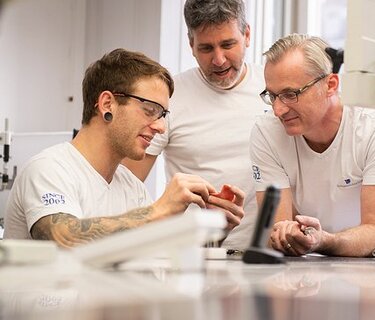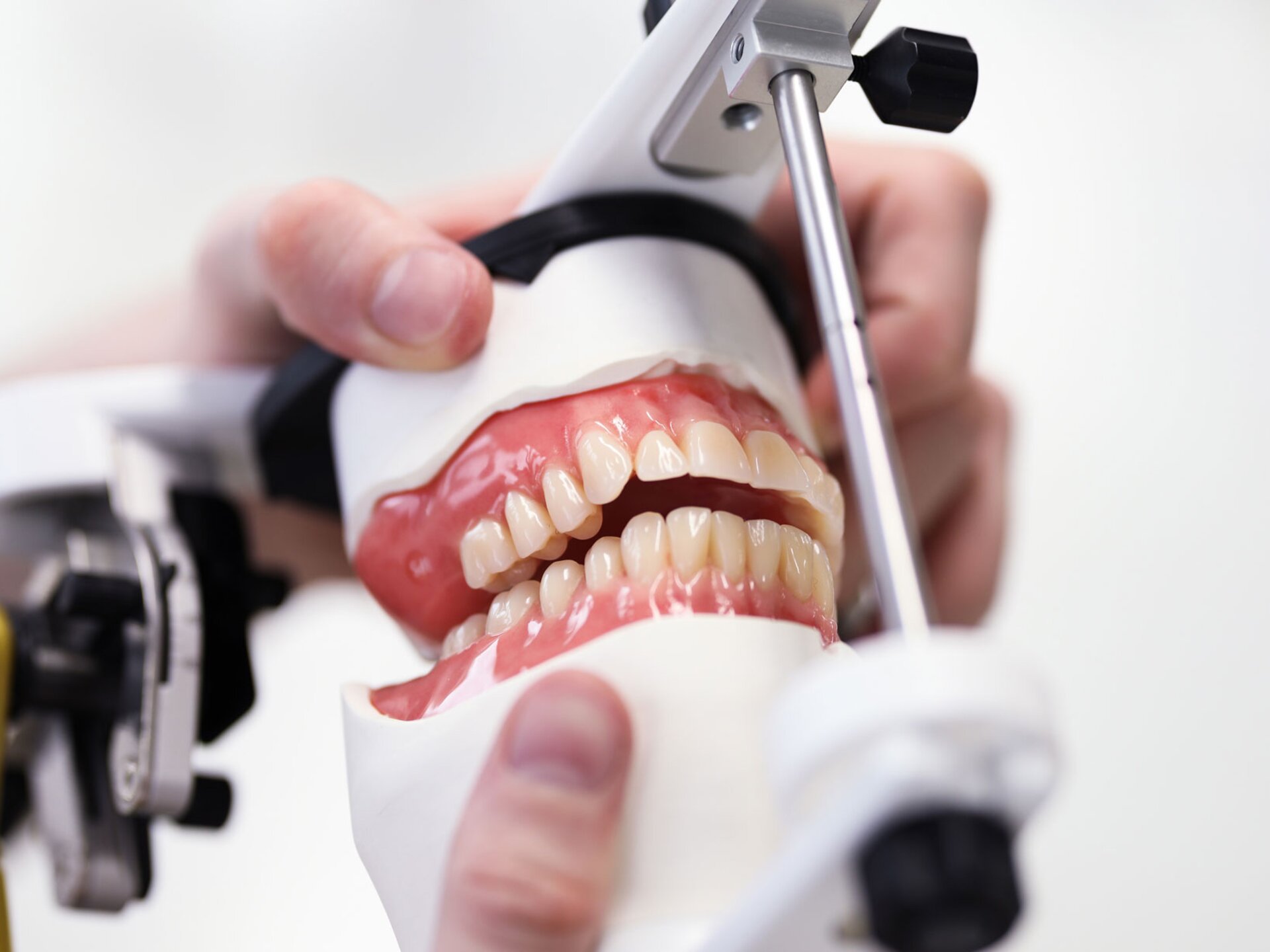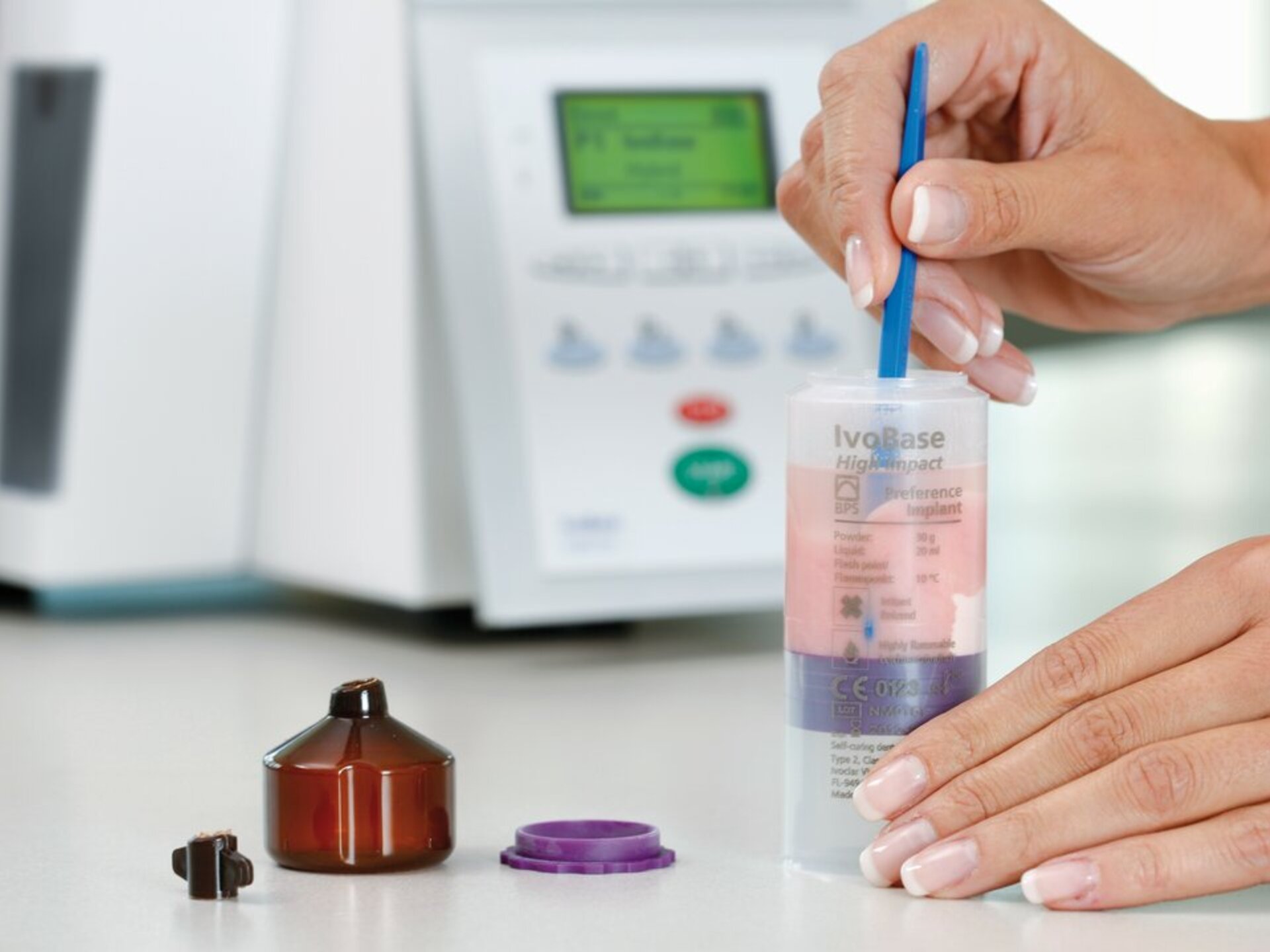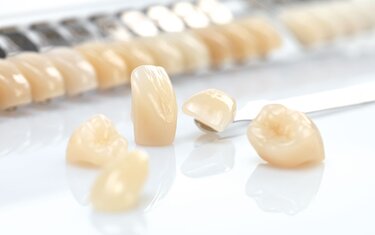For a long time, prosthetic teeth were treated as the “poor relations” in the dental laboratory, as the majority of technicians were always more passionate about ceramics. However, acrylic is also a very exciting and versatile material. With innovative developments in removable prosthetics (e.g. implant prosthetics), in terms of prefabricated or prosthetic teeth, it is now deservedly increasing in popularity. Find out which three essential requirements the authors need from a contemporary prefabricated tooth.
Master DT Patrick Zimmermann and DT Dominik Mäder
An implant restoration in the edentulous jaw has many advantages for the patient. Thanks to the creation of appropriate implant protocols and modern implant designs, this technique is now highly accepted – also in the form of a removable denture. For dental technicians, this means becoming accustomed with implant prosthetic restoration concepts. In addition to abutment and framework production, the esthetic-functional design also plays an important role. Here, state-of-the-art prefabricated teeth become the protagonists. Implant restorations are often complex, high-quality creations. For this reason, the prosthetic teeth must suit the situation accordingly.

First and foremost, patients want beautiful teeth. The masticatory function is an assumed prerequisite for high-quality implant prosthetics as it is for all dentures.
One of the basic requirements when setting the teeth up on a full denture or on implants, is to set each individual tooth in such a way that the denture will not tilt under masticatory pressure.
The number of implant-supported restorations is increasing, as is the demand for prefabricated teeth with increased abrasion resistance.
First and foremost, patients want beautiful teeth. The masticatory function is an assumed prerequisite for high-quality implant prosthetics as it is for all dentures. Fortunately, the days in which the prefabricated or prosthetic teeth were called "plastic teeth" due to their unnatural appearance are over. Today, we have access to beautiful, life-like teeth – with a modern and esthetic appearance. In our opinion, this is essential, because after all, the prefabricated tooth is the “icing on the cake” for a complex implant restoration. Modern, acrylic prosthetic teeth have outstanding qualities, with their life-like appearance, light-optical properties and a morphological design resembling that of natural dentition. We are impressed by SR Vivodent S DCL (Ivoclar Vivadent) and their individual anterior esthetics. These teeth are simply beautiful. The authentic surface texture and layered build-up of the teeth provides an age-appropriate, vibrant appearance resembling that of natural dentition. The exceptional design provides a high level of individuality. The natural, anatomical tooth shape with "real" curvature allows a life-like set-up. The teeth can be individually adjusted by grinding lightly. The layered build-up gives a natural appearance and has a good level of translucency.
One of the basic requirements when setting the teeth up on a full denture or on implants, is to set each individual tooth in such a way that the denture will not tilt under masticatory pressure. There are various set-up concepts, one of which is the classic Gerber method (according to Prof. Dr. Albert Gerber). Features include lingualized, bilaterally balanced occlusion and tooth-to-tooth occlusion. The lingualized occlusion concept, in which the narrow supporting surfaces of the upper palatal cusps come into occlusal contact with the lower lingual fossae, enables the autonomous masticatory stability of individual teeth. This means that horizontal shearing forces are reduced and the prosthesis and implants remain secure. We have been using the SR Ortholingual S DCL (Ivoclar Vivadent) for some time now, which are designed for lingualized occlusion (mortar and pestle principle). The upper teeth have dominant palatal cusps and the lower teeth have a pronounced functional central fossa. The centric contacts are concentrated in the fossae of the lower teeth. The buccal cusps are set-up out of contact. This means the teeth are ideally suited for a lingualized set-up in tooth-to-tooth occlusal contact. If necessary, a tooth-to-two-tooth intercuspation can be set up.
The number of implant-supported restorations is increasing, as is the demand for prefabricated teeth with increased abrasion resistance. Hardly any patient will accept that the prosthetic teeth have to be replaced or renewed shortly after their new dentures are finished. The tooth material plays an important role. In our laboratory, we prefer to use prefabricated teeth, which guarantee a long service life from a material science point of view. One material that meets these requirements is the highly cross-linked DCL (Double Cross Linked) acrylic used by Ivoclar Vivadent for various prefabricated tooth lines.
Modern dental restorations on implants are becoming increasingly popular with patients. Removable dental restorations will also continue to exist. Therefore, implant-supported complete dentures play an important role in everyday laboratory life. In future, the number of edentulous patients will continue to increase. In addition, the older generation is changing. The "new old people" are accustomed to a high standard of dental medicine and want their dental restorations to be inconspicuous – esthetically as well as functionally. It’s not only an accurately produced framework and abutment that is needed, but also the prefabricated teeth which play an essential role in fulfilling these requirements. In order to ensure of long-lasting functionality and satisfaction, the static aspects, set-up and occlusion concepts must be taken into account in addition to the esthetic appearance and material stability of the teeth
Receive our monthly newsletter on recently published blog articles, upcoming education programs and exciting new product campaigns!





